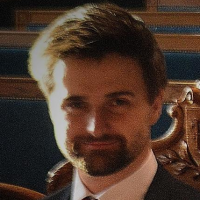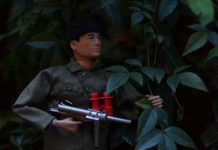A year after the end of Apartheid, Nelson Mandela’s Government of National Unity launched the South African Truth and Reconciliation Process (TRC) under the Promotion of National Unity and Reconciliation Act 34 of 1995. The intention of the TRC was to embark on a sensible and necessary exercise that would enable South Africans to come to terms with their past and advance the cause of reconciliation. Public hearings of the Human Rights Violations Committee and the Amnesty Committee were held at many venues around South Africa and the event was broadcasted to the TV screens via South Africa’s Broadcasting Corporation. The process with its emphasis on reconciliation and restorative justice was headed by the Archbishop Desmond Tutu and granted the right to subpoena witnesses, but it was not a formal court.
The purpose of this article is not to argue against a TRC or the principle of Restorative Justice, but to highlight the commission’s shortcomings and why proponents of this model to heal communities should also be honest about what it failed to achieve in South Africa.
When it came to certain high profile politicians, truth, reconciliation and more importantly the principal of justice were at times put aside in favour of judicial realism. High profile Apartheid politicians and ANC affiliated liberation fighters were exempted from testifying or selectively granted Amnesty and therefore effectively never held to account for the crimes that they had committed. Those individuals who fell out of favour with the new political establishment were sent to jail and became convenient scapegoats for the system that they served. Nothing exemplified this double standard more than the cases of Adriaan Vlok and Eugene de Kok.
On January 8, 2023, Adriaan Vlok, the last Apartheid Police Minister, died aged 85. Vlok was an exceptionally cruel character who literally got away with the major crimes of the Apartheid Regime. Under Vlok’s watch, many of the killings of the Section C1 Counterinsurgency Unit occurred with actions that included torture, detention without trial, murder and political assassination. Most of the killings notoriously took place at Vlakplaas, a farm just outside of Pretoria.
“As the South African government felt the squeeze of international pressure in the late 1980s, it unleashed its darkest tactics before the dawn of democracy in 1994. No one was more assiduous in implementing the paranoid and isolationist mentality of the Botha administration than Adriaan Vlok. It was he who had ordered the bombing of theaters that were screening “Cry Freedom” in 1987. Further, he was responsible for the national security strategy, ordering secretive police squads to pluck suspected activists off the streets for detention and interrogation, thereby removing them from the political struggle. Under Vlok’s watch as apartheid’s top cop, an estimated 30,000 people were detained in the 1980s (including 15,000 during the State of Emergency declared in 1985) and over 100 were killed. Not surprisingly, this precipitated a seismic reaction in the international human rights community”
Vlok’s involvement and knowledge of the Vlakplaas murders was revealed at the Truth and Reconciliation Commission by the operative Eugene de Kock, who committed many of the killings. De Kock revealed that Adriaan Vlok had not only visited Vlakplaas, but bragged that the “Afrikaner Volk” would “not surrender in a thousand years”. Eugene De Kock would eventually be sentenced to 25 years behind bars, but the man who ordered the killings, Adriaan Vlok, was granted amnesty and given “forgiveness”.
Details of De Kock’s Testimony at the TRC appear here.
In the years after the fall of Apartheid, Adrian Vlok became a “born again Christian” and even washed the feet of the victims and victims’ families that he had ordered to be assassinated. One notable case was the Rev. Frank Chikane whom the security forces had tried to kill by lacing his underwear with Paraoxon. One can only speculate about Vlok’s newfound belief in Christ, his knowledge of the sixth commandment, and his sincereness of appreciating being forgiven, but it is questionable if justice was adequately served, given the nature of the TRC’s failure to prosecute the decision makers.
When asked at the hearings if he feels bitter about the fact that the Apartheid Generals betrayed him, Eugene de Kock made a cheeky comment that their refusal to accept responsibility didn’t make him bitter, but rather nauseous.
“Dit het my nie bitter gemaak nie, dit is my naar gemaak”
The audience, of the families of mostly black victims, gave him an applause.
It revealed a rare moment of truth in what the TRC meant to the victims of the political violence that took place during the Apartheid years. The TRC brought some truth, some reconciliation, but left a nauseating taste that justice wasn’t adequately served during the process.
As the Archbishop Desmond Tutu said on the day, Eugene de Kock became the Generals’ fall guy.
In hindsight, the TRC shortcoming wasn’t just the selective use of Amnesty, but more importantly the failure to cross examine every witness and prosecute those responsible for crimes that they had committed. The TRC was a public forum of the sort that accepted conflicting testimonies and political statements as truth, but it lacked the adequate means to evaluate them.
The TRC was selected and made up of “mostly lawyers and priests” as the Apartheid Historian Herman Giliomee said of the event with no judge being part of the body. Alternative processes were debated at the time such as a legal prosecution that would probably have broadened the process and potentially lead to the indictment of many high-level politicians that included liberation fighters, Apartheid Ministers and even Presidents.
The lack of cross examination for example is the very technical ground that allowed former President PW Botha to escape participation in the TRC. Botha ignored a subpoena and made a mockery of the process by calling it “a circus”.
Botha’s knowledge of the Apartheid killings, like former President FW de Klerk’s, effectively became buried with time, as were the actions of the Regime’s Security Forces. In the final days of the TRC, the cartoonist Jonathan Shapiro drew a picture of the Apartheid Security Forces shredding away state secrets as Desmond Tutu handed over his Final Report to the then President Thabo Mbeki.
Under legal prosecution, potentially, South Africans would also have had more knowledge about the crimes that were committed under the name of liberation, such as the African National Congress’s torture camps at Camp Quatro in Angola and the subsequent South Africa President Jacob Zuma’s knowledge thereof, and more controversially then President Nelson Mandela’s links to the the 1983 Church Street bombings.
In the early years of democratic rule, under South Africa’s de facto one party state, the memory of the TRC became part of state ideology. The founding myth known as “The Rainbow Nation” was established in political discourse, a termed coined by the Archbishop Desmond Tutu himself. The TRC was presented as a political success and a simplistic narrative of broad forgiveness and reconciliation between blacks and whites was sold to the South African public and the world at large. On an international stage the TRC became a model for other conflict driven areas to settle their disputes through the principal restorative justice. But closer inspection of this narrative shows that the TRC’s success was overblown and that certain crimes were never adequately investigated for the sake of politics.
Establishing truth and a common history, as inconvenient and difficult as it is, should be the first goal of any process that aims to establish an uncompromising truth. But when it came to high profile cases of national importance, the TRC followed the example of other state commissions such as the Warren Commission and subsequent 911 Commission. Political ambitions intervened with the search for truth and as always it came at the cost of the real victims and their families. To its critics, like the family of the Black Consciousness Leader Steve Biko, who died under police torture, the TRC became a vehicle for political expediency”, which “robbed” them of their “right to justice”.
The case of Vlok, in particular, showed how the credibility of the process came into question as the process itself led to the selective granting of Amnesty and the selective exercise of justice.
(Featured Image: “All shall be equal before the law: justice graffiti in Cape Town, South Africa” by Ben Sutherland is licensed under CC BY 2.0.)





